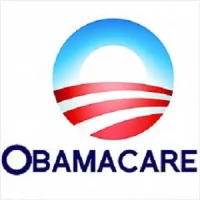While healthcare
reform and the transition to delivering value-based care are pushing merger,
acquisition and partnership (MAP) activity to ever-higher levels in the U.S., a
survey suggests that a number of reasons are driving this growing phenomenon as
healthcare leaders continue to look beyond their own organisations to survive
and thrive.
According to the 2016 HealthLeaders MediaMergers, Acquisitions and Partnerships Survey, the top financial objective for MAP activity is to increase market share (70 per cent), followed by improving financial stability (60 per cent), improving operational cost efficiencies (58 per cent), improving position for payer negotiations (57 per cent), and expanding geographic coverage (57 per cent).
Likewise, the top five care delivery objectives follow a similar pattern: to improve position for population health management (70 per cent), followed by care delivery efficiencies (63 per cent), clinical integration (61 per cent), care delivery cost efficiencies through scale (54 per cent), and expanding into new care delivery areas (51 per cent).
According to Greg Devine, former senior vice president of provider strategies at ThedaCare, a Wisconsin–based nonprofit health system, and current president and CEO at AboutHealth, a Wisconsin-based clinically integrated network, the high level of MAP activity involving physician practices indicates the key role that primary care physicians play in the continuum of care, making them attractive acquisition targets. As a result, providers in some areas of the country are facing tight supplies of physicians.
“Particularly at the primary care level, I think it’s not for the sake of ownership or control that’s driving this. It’s really is being driven by the need to align the various elements of the continuum of care around delivering better outcomes and waste elimination,” he said.
Without question, survey respondents are bullish on the prospects for higher levels of MAP activity. Seventy-five percent of respondents say they will either be exploring potential deals or completing deals that are underway in the next 12–18 months, and only one in four respondents (25 per cent) say they have no MAP plans, according to Jonathan Bees, senior research analyst at HealthLeaders Media.
Further, nearly two-thirds of respondents (63 per cent) said that their organisation’s MAP activity will increase within the next three years, and only three per cent say it will decrease. Thirty-three percent said it will stay the same.
Another barometer of MAP activity is the total dollar value of the mergers and acquisitions that respondents said their organisations will be exploring over the next three years. While this year’s survey results are comparable to last year’s, there is a small shift to a higher total dollar spend on mergers and acquisitions (M&As). The $50–99.9 mln range is up three percentage points to 17 per cent, and $100–499.9 mln is up five points to 21 per cent compared with last year, while the lower $10-49.9 mln range is down nine points to 23 per cent, added analyst Bees.
Interestingly, respondents indicate that it is not only total MAP spend that is increasing, but also the size of the deals being pursued. Nearly half of respondents (49 per cent) said that they expect the dollar value of the M&As their organisation will be pursuing within the next three years will increase, and only five per cent said the value will go down. Sixteen percent said it will remain even.
Impact of the Affordable Care Act
As mentioned earlier, the reasons behind the high rate of MAP activity range from traditional considerations such as the need for increased market share, improved scale, and increased financial stability, which are more tactical in nature, to more strategic and far-reaching factors such as anticipating the impact of the Affordable Care Act and the transition to value-based care.
“The Affordable Care Act is certainly driving some of it,” said Paul Tait, chief strategic planning officer for University Hospitals, a Cleveland-based non-profit health system. “But there’s usually a financial reason, which is the catalyst, and there’s a couple of different elements to that. One is that there’s a lot more capital availability for acquisitions these days—and with lower interest rates—so if you’re a larger, well-established health system, then you probably can borrow money at a reasonable rate.
“On the other side of it, I think with a lot of the hospitals that are linking up, it’s because they need access to capital or they need new investment. And in some cases, they’re just running out of money. There’s an awful lot of financial margin pressure on hospitals, and I think that’s just going to get worse because of the payment changes that have already started and will accelerate.”
Tait points out that increasing scale is a key driver of increased MAP activity because of the range of its many benefits, such as greater purchasing scale with vendors.
Looking to the future, respondents were also asked to identify the organisations that they had a high interest in pursuing through a MAP deal within the next year. The top five responses were: physician practices (61 per cent), health systems (41 per cent), hospitals (39 per cent), physician organisations (34 per cent), and retail clinics/urgent care clinics (26 per cent).
“We’ve seen a number of community hospitals that have been unsuccessful replenishing their medical staff as people leave or as people retire. In some cases, they may have lost physicians to competitors in their local market, and if they try to employ some doctors, they don’t have the scale to do it well. It’s very common for us to see a single community hospital that might be trying to employ anywhere from 15 to 30 doctors, and they’re losing over $200,000 per doctor,” said Tait.
As regards the hurdles that have the potential to derail the MAP initiative, concern about the assumption of liabilities (29 per cent) was the top financial reason for the second year in a row.
The extent of a target organisation’s financial liabilities may not be apparent until the due diligence phase is completed, which may explain why this can be a deal-breaker, concluded research analyst Bees.
Concern about
risk/revenue sharing (23 per cent), price (22 per cent) and regulatory issues
(20 per cent) rounded out the top four responses.
Source: Health Leaders Media
Image Credit: Health Leaders Media


![Tuberculosis Diagnostics: The Promise of [18F]FDT PET Imaging Tuberculosis Diagnostics: The Promise of [18F]FDT PET Imaging](https://res.cloudinary.com/healthmanagement-org/image/upload/c_thumb,f_auto,fl_lossy,h_184,q_90,w_500/v1721132076/cw/00127782_cw_image_wi_88cc5f34b1423cec414436d2748b40ce.webp)







